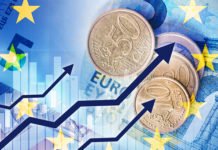Highlights:
- US GDP growth slowed to a 0.7% annualized pace in Q1 from 2.1% in the prior quarter.
- The increase fell slightly short of market expectations for a 1% gain.
- Consumer spending growth dipped to 0.3% following three consecutive quarterly gains of 3% or more.
- Slower inventory investment subtracted nearly a percentage point from headline growth.
- Government spending unexpectedly fell for the second time in the last year.
- Business investment rose nearly 10%, the best gain in three years.
Our Take:
While today’s GDP report confirms a slow start to the year, we are far from ready to throw in the towel on our forecast for growth to pick up in 2017. In fact, the underlying details generally support our outlook for a more broadly-based increase in domestic spending to underpin above-trend activity this year. Much of the moderation in Q1 growth reflects a substantial slowdown in consumer spending that looks unlikely to persist given a myriad of factors supporting households (including wage growth and rising confidence), not to mention the transitory nature of the dip in Q1 utilities spending. Aside from that, accelerating business investment and another strong add from housing made for the best gain in private fixed investment since 2012. Given improving business sentiment and less drag from the energy sector, we think the pickup in Q1 capital spending can be sustained (though perhaps not at Q1’s impressive pace). An expected return to solid growth in consumer spending would then allow for domestic demand to increase at a 2½% clip over the remainder of the year.
We doubt the Fed will have a much different take at next week’s policy meetings. Earlier comments indicated the Committee views slower Q1 growth as largely reflecting transitory factors, so today’s reading shouldn’t do too much to dampen their otherwise positive economic outlook. We look for rates to be on hold in May but think a June hike is likely if the rebound in growth plays out as expected.













